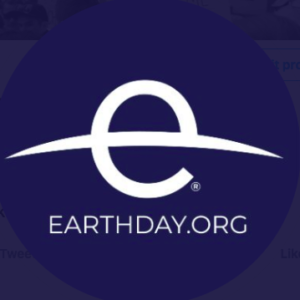Artists for the Earth
A sense of wonder
June 28, 2019
EDN’s Artists for the Earthtm Spotlight: Kaiulani Lee
“A child’s world is fresh and new and beautiful, full of wonder and excitement. It is our misfortune that for most of us that clear-eyed vision, that true instinct for what is beautiful and awe-inspiring, is dimmed and even lost before we reach adulthood. If I had influence with the good fairy…I should ask that her gift to each child in the world be a sense of wonder so indestructible that it would last throughout life, as an unfailing antidote against…alienation from the sources of our strength.”
Rachel Carson The Sense of Wonder
In 1962, Rachel Carson, renowned as a nature writer for her books about the sea, published Silent Spring and forever changed the world. Her seminal work was about the way in which mankind could alter and devastate the environment with the use of pesticides. When she came up against America’s chemical industry that was producing DDT for widespread use, it attempted to discredit her. But with the help of President Kennedy’s Science Advisory Committee that backed her work, DDT was ultimately banned. Through her writing and advocacy she ushered in the environmental movement. As a result of the book, perception of nature’s fragility and the need to protect it was lodged in the consciousness of the public and at a pivotal moment in 1970, the creators of the first Earth Day found a nation ready to take action. Earth Day has been credited with the active beginning of the environmental movement, but all environmental advocacies owe their inspiration to Rachel Carson. Today, one hundred years after her birth, Carson’s critics are back, blaming her and other environmentalists for half a century of government regulations and accusing her of scaring the world away from “useful” chemicals that can eradicate pests and increase agricultural output, pernicious or unknown side effects aside. A Sense of Wonder is a one-woman show written about Rachel Carson by the award winning Broadway actress, Kaiulani Lee. First performed in 1991, Lee has been performing it ever since. An enormous undertaking, it took three years of study and research to complete and is composed almost entirely of Carson’s own words. Ms. Lee grew up in Maine and was familiar with Carson’s work, but it was in the 80’s when the Environmental Protection Agency budget was being cut and Lee’s husband, an environmental activist, was raising the alarm about how technological capability was affecting the natural world, that she decided to do something. When she re-read Carson, she said in an interview on PBS’s Bill Moyers Journal that she felt Carson had “articulated her heart” and set out to learn everything about her. At that time, Rachel Carson had drifted from the public’s consciousness, her books no longer on the bestseller lists, and at first her gatekeepers at the Rachel Carson Council would not give Lee permission to produce a play about her. Eventually, however, through William Shawn the editor of the New Yorker Magazine who had serialized Carson’s work and others, she was finally given the go-ahead. Lee wanted to perform, not write the play, but Shawn encouraged her to be its author as well. The biggest difficulty was to capture the public and the personal Rachel Carson. Lee set the play in Carson’s study and structured it in two parts that take place during the last year of her life. The first begins as Carson prepares to leave her home in Maine for Washington, D.C. She reminisces about her research as a marine scientist, her career with the U.S. Fish & Wildlife Service, and the writing career that followed after the acceptance of her articles by The Atlantic. She talks about her breast cancer and concern for her adopted son, Roger. The second part begins two months afterwards in the wake of the furor over Silent Spring as she battles the chemical industry, testifies before Congress and struggles with her illness. Since 1991, A Sense of Wonder has been performed at hundreds of high schools and universities, at prestigious institutions such as the Smithsonian, the Albert Schweitzer Conference at the U.N. and on Capitol Hill. Worldwide it has been performed in England, Italy, India, Japan, Bangladesh, and in every province of Canada. Her work was celebrated on Bill Moyers Journal in an hour-long interview and the play was filmed and aired on PBS’s American Experience. About Carson, Lee said in her interview with Bill Moyers that she hopes to get across her messages, one of which is “the interconnectedness of all life. We need to understand that even though the lines are invisible sometimes to our eyes or ears, they are there and that we will all sink or swim together.”